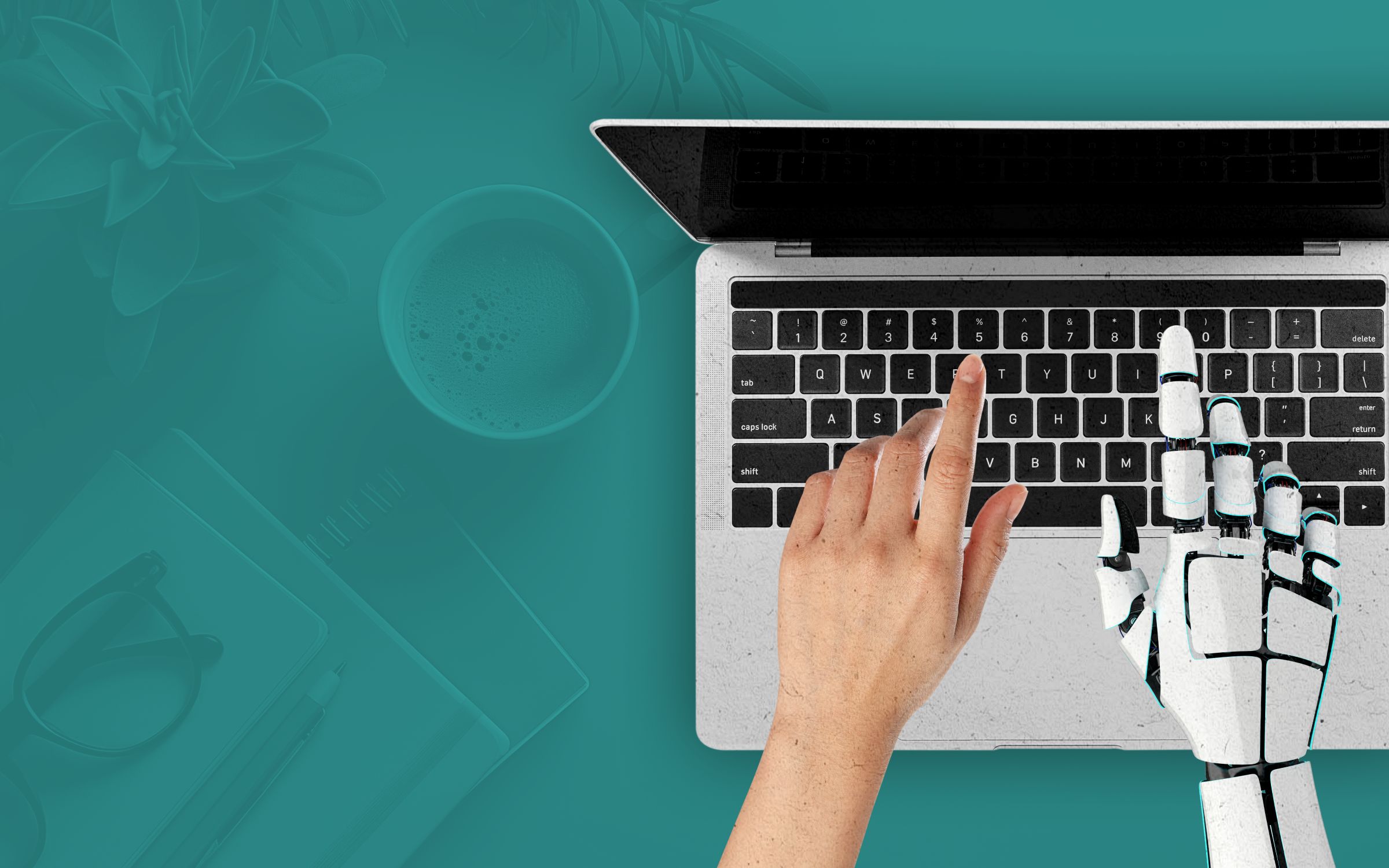Although implicit bias training has been a pillar of diversity, equity, and inclusion (DEI) training at corporations and universities since the Civil Rights Act of 1964, there remain discordant opinions about the training’s long-term effectiveness in mitigating bias. There are two reasons for that: 1. There isn’t enough scientific research with data proving implicit bias training changed people’s behavior and led to a more inclusive workplace, and 2. There isn’t a set curriculum.
Each company approaches training about implicit bias, also referred to as unconscious bias, differently. While some companies present training as an online course, such as Microsoft and LinkedIn Learning, others have opted to weave the learning into their overall DEI training. The consensus among the DEI leaders we spoke with is that the latter is more effective. Educating people about their explicit and implicit biases, and reassuring them that we all have biases, is just the beginning; there needs to be structural and policy changes made within your organization to make a cultural change.
Senior Executive DEI spoke with six leaders in DEI across industries from technology to health care to learn how companies are incorporating unconscious bias training into their DEI strategy and what the most effective method is for educating employees.
Why Successful Implicit Bias Training Is Important
Corporations in the U.S. spend as much as $8 billion a year on diversity training, including implicit bias training, per McKinsey & Company. It’s a small price to pay compared to the estimated $64 billion spent annually to replace more than two million employees who leave because of unfairness and discrimination.
Constructive implicit bias training has the potential to improve belonging and organizational culture. In fact, Harvard Business Review found that organizations with a high belonging rate were linked to a 50% drop in turnover risk, a 56% increase in performance, and a 75% reduction in sick days. For a 10,000-person company, that’s an annual savings of more than $52 million.
However, not all companies will be at a stage where they have the resources to offer comprehensive implicit bias training. If your organization falls into this category, Aubrey Blanche, the senior director of people operations and strategic programs at Culture Amp and a member of the Senior Executive DEI Think Tank, an employee experience software as a service (SaaS) company, suggests redirecting your efforts.
“A smaller team is likely to have more success auditing their talent processes than investing in training if they’re prioritizing resources,” says Blanche. “This is because if the underlying processes are inequitable, even the most effective training isn’t likely to have much impact. Training should really be the last phase of an overall strategy to create equitable outcomes, after equitable process design and audit development.”
7 Ways to Make Implicit Bias Training More Effective
From choosing an optimal format to providing actionable next steps, here are seven strategies for improving implicit bias training at your organization.
1. Create a psychologically safe environment.
Discovering unconscious biases is a personal undertaking. The process requires employees to identify experiences in which a stereotype-confirming thought guided their actions — which isn’t a simple endeavor. To ensure employees feel comfortable sharing these experiences, create a welcoming environment.
First, keep the training groups small to mirror the intimacy of the subject matter. Blanche shares that Culture Amp’s training is kept to a maximum of 12 participants per group, which she finds increases participants’ engagement.
“People are more likely to talk, reflect, and ask questions in a small group. What I find is that while I’m the teacher and I have my learning objectives, the group does a great job of teaching each other through their insights and questions,” Blanche says.
Second, as the moderator of the training session, allow yourself to be vulnerable. Kevin Walters, the senior director of diversity and inclusion solutions at SilkRoad Technology and a member of the Senior Executive DEI Think Tank, uses his time as moderator to share instances in which he self-corrected his biases. He advises this practice as it opens up the floor for trainees to share when they do the same.
“One of the things I’ve been able to do is connect with people by showing vulnerability and by allowing them to understand that it’s OK to make mistakes. It’s the journey,” Walters says.
2. Tailor implicit bias training to your company and industry.
Implicit biases show up differently in each industry as there may be implications beyond creating an inclusive work culture. In tech, it’s about providing an inclusive product. In health care, it’s about providing equitable care regardless of patients’ demographics.
Deb Grimes, the chief diversity officer at Ochsner Health, the largest nonprofit academic healthcare system in Louisiana, says it’s critical for diversity teams to discuss how implicit and explicit biases creep not only into employees’ interactions with one another but also with patients. Grimes says medical practitioners are taught through training how to recognize when their biases are coming into play and slow down the process.
Through simulations, in which employees act out scenarios, such as a single mother applying for a job or a patient who was recently released from prison, employees discuss their reactions, pinpointing if and when their biases arise and how to deal with them. “The point of the exercise is stressing people out to the point where they understand why patients come to you with these issues,” Grimes adds. “Maybe that’s why they’re noncompliant, or maybe that’s why you can’t relate to your coworkers — because they’re dealing with something you never had to deal with.”
During a series of implicit bias training sessions, medical practitioners at Ochsner Health are also taught how to conduct themselves while caring for patients who carry explicit and implicit biases. Grimes says the health care system enacted a policy stating medical practitioners must escalate the situation “in a way that doesn’t interfere with treatment but allows you to bring others in to help you.”
Dionna Smith, the chief diversity officer at the educational technology company GoGuardian, says while creating the company’s latest product, Giant Steps, a gamified learning experience for K-12 students, her team worked with students to ensure the product was inclusive. “We learned so many great things, including with our avatars, for example, not only having different complexions and skin colors but also dreadlocks or red hair, different things [the students] wanted to see. We also added wheelchairs and hearing aids.” Allowing users to test the product and provide ongoing feedback not only made the game more inclusive but also enabled creators to check their biases in creating components like avatars.
3. Choose an effective training format.
University Professor Robert F. Bruner wrote that “repetition is the first principle of learning, as it supports a number of highly important educational goods: self-paced discovery, ability to reflect, consistency and clarity of thought.” Many of the DEI leaders we spoke with have put this principle into practice as they’ve embedded implicit bias training across multiple training sessions or throughout an employee’s journey.
At Ochsner Health, Grimes conducts implicit bias training over three sessions; the first two are virtual and can be accessed at any time by employees and the third is held in person on a rolling basis.
The first session outlines implicit biases and guides users in assessing theirs. The second session, which is interactive, lasts several hours and builds on the first. It outlines when their biases may be triggered and teaches trainees how to slow down their thought process, self-reflect, and, if needed, ask for assistance.
The third session is centered around simulations, discussed above. These in-person sessions are conducted in small groups of five to 15 employees, allowing for a psychologically safe space, where participants act out what can happen if they don’t address their biases or understand when they’re affecting their interactions. The simulations are followed by deep dives to discuss what occurred.
Meanwhile, Blanche and Madhavi Bhasin, the vice president of diversity, inclusion, and belonging at Okta, Inc., a cloud-based identity management system, share that they conduct implicit bias training with touchpoints throughout the year, which we’ll discuss in the next point. Each of these touchpoints is conducted with a variation of the following format:
- Preparation: Ahead of meeting in person, assign “homework,” such as a blog post, video, or podcast, with reflection questions to help the trainee prepare for the in-person training.
- Discussion: Allow trainees to dialogue what they have learned in small groups. Lead a discussion, introducing new topics that tie into the homework. Blanche uses the Socratic method to encourage critical thinking and allow participants to question and learn from one another.
- Simulation: Provide scenarios rooted in explicit and implicit biases and allow participants to act out how they would react. Offer guidance that shows them how to identify and work through their biases.
- Reflection: Reconvene as a group or allow participants to reflect in a one-on-one setting. This is another opportunity for them to talk through what they learned and for you to answer their lingering questions.
- Surveys: As biases change and mutate, so should how you manage training. Conduct surveys that ask participants if they learned something new, whether they feel equipped to mitigate their biases in the real world, and how the training can be improved. Continue reshaping your training to ensure you’re meeting your employees’ needs.
4. Contextualize training with touchpoints throughout the year.
Plan to contextualize whichever type of training you settle on by making it a multipart series or by conducting it throughout the employee’s lifecycle. For example, conduct a training session before a hiring cycle for managers involved with the hiring process. Okta presents “Hiring at Okta,” a six-slide presentation outlining how implicit biases can show up in the form of gendered or triggering language in job descriptions. The hiring panel also has a structured questionnaire during interviews to further ensure biases don’t creep in.
Ahead of reviews, or calibration sessions, is another opportunity to mitigate biases like the recency bias, which exaggerates the success of recent events, overshadowing preceding events, and the halo effect, which is when a person’s positive characteristics determine the way we regard other, unrelated traits.
“If you’re giving people specific, actionable guidance in a context where they understand how they’re going to use that guidance, they’re much more likely to do it, which gets you to reducing bias in the first place,” Blanche says. “We know that if you just focus on raising awareness without giving people actionable strategies, there is no point in making the investment.”
5. Decide who will receive implicit bias training.
If you don’t have the budget or resources to conduct implicit bias training across your organization, similar to Ochsner Health, Blanche recommends “relatively frequent, contextualized training is the right approach for anyone in a role with decision-making authority.” This includes C-suite executives, employees involved in the hiring process, people leaders conducting performance reviews, and talent professionals who select participants for leadership development opportunities or processes like succession planning.
In addition to some of the online modules we mentioned, which are a good start to introducing unconscious bias to employees, you can also collaborate with your employee resource groups to lead discussions and activities around implicit and explicit biases.
6. Ensure training provides actionable strategies to mitigate biases.
Take training a step further by asking attendees to apply what they’ve learned. Bhasin shares that nearly every training at Okta ends with action items summarizing what participants learned and examples of how they can apply it in their work. One example of an action item might be asking managers to look at their team’s demographics and decide whether their team is balanced, meaning everyone not only feels represented but included. Another action item may be asking training attendees to add their pronouns to their Slack profile and email signature.
“We want to make sure we summarize the learning [by saying] here are three things you can do and this is how you can show up as a team leader,” Bhasin says.
Angelique Buster, the head of DEI at Khoros, a global customer engagement software company, says she conducts surveys before and after implicit bias training sessions to identify where the issues are and whether they improved. “I can look at the data to see if a particular leader did not the best scores when it comes to inclusion initiatives or cultural initiatives. But after the training, I see they really improved within this space, and their group was able to improve, and then I can have transparent conversations with folks about it.”
Buster meets with leaders who don’t improve to relay the feedback and offer an action plan, which may involve additional inclusive leadership training. Similarly, at SilkRoad Technology, Walters says he works closely with the people and HR teams to “assess gaps and opportunities” and “uncover how we can solve certain pain points across the company.” Their learnings may call for modifications to their training or additional courses for certain groups, depending on what the issues are and what employees need.
7. Reiterate that the work continues beyond training.
Before, during, and after training, it’s important to remind employees that mitigating their biases is a process and one they’re going to have to actively work on. “Behavior modification is a journey in itself. The onus can’t be on the company or [head of diversity],” says Walters. He adds that he’s consistently sharing books, resources, articles, and studies, and building out in-house resources, including a list of inclusive terms, with SilkRoad Technology employees to reiterate training takeaways and move them along their journey.
Blanche adds that it’s important to “ensure that training doesn’t normalize that everyone has biases. [Training] should help attendees understand that everyone is responsible for mitigating and addressing [implicit and explicit biases].”
Bhasin says a big piece of training is emphasizing that, although Okta provides the content, each employee is on their own inclusion journey, both as a person and as a leader. Her team holds sessions to better understand where everyone is on their journey, continue moving them forward, and discuss topics like biases. “It’s not that you’re behind or you’re ahead, but you’re at a different point in your journey. Apply this content to where you are and try to move forward. There is no judgment. We will walk along with you on this journey. That’s usually how my team shows up.”
Grimes adds healthcare practitioners need to be outcome-driven when it comes to mitigating biases. “We need to own the fact that because we haven’t done unconscious bias training, we still have health disparities today — because of our inability to do this training appropriately. If nothing else, let’s just own that the outcome of not doing unconscious bias training is we will forever have health disparities.”






